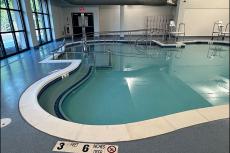Assemblyman Fred W. Thiele Jr. announced on Monday the introduction of two bills in the New York State Assembly aimed at addressing a statewide affordable housing crisis, one that is particularly acute on the South Fork.
The proposed legislation would direct local governments to adopt affordable housing plans and provide incentives to create accessory dwelling units.
In a statement, Mr. Thiele noted that the crisis has been exacerbated by the Covid-19 pandemic, which in 2020 saw a large migration from New York City to the South Fork and elsewhere.
The first bill Mr. Thiele introduced would establish the Accessory Dwelling Unit Incentive Act, which if enacted would create several incentives to encourage residential property owners to build such units.
One is the Accessory Dwelling Unit Forgivable Loan Program, to be administered by the State Division of Housing and Community Renewal. Recognizing that the upfront capital cost of constructing an accessory dwelling is a primary impediment to its creation, the program would provide property owners with a forgivable loan of up to $75,000 for 20 years toward construction costs. If the property owner rents the unit to tenants meeting affordable income and rent guidelines for the 20-year loan period, the loan would be forgiven and become a grant.
The bill would also establish an income tax credit for a property owner with a legal accessory unit who rents it under affordable occupancy, rent, and income guidelines. The credit would be 50 percent of the difference between the market-rate rent and the affordable rate rent, up to $10,000 per tax year.
The bill would also establish a real property tax exemption for a property owner who constructs a legal accessory dwelling and rents it in accordance with affordable guidelines. Municipalities would be authorized to grant a property tax exemption equal to 100 percent of any increase in assessed value of the property attributed to the construction of the unit.
Mr. Thiele’s second bill would direct every local government to enact a five-year plan to address local and regional housing needs. The plan would be required to examine, but would not be limited to, several options to create affordable housing: financial assistance to homebuyers; production of affordable housing for sale and rent; production of affordable housing in conjunction with public/private partnerships; rehabilitation of existing buildings for conversion to affordable housing; acquisition of interests in real property in existing housing stock to produce affordable housing; accessory dwelling units; mixed-use developments that include affordable housing, and housing counseling services.
“Good planning is critical to the future of our communities,” Mr. Thiele said in the statement. “Housing is a critical need for any community land-use plan. . . . These bills will give local governments the plan they need to address affordable housing and the tools they need to implement the plan.”
A proposal made in Gov. Kathy Hochul’s budget earlier this year would have mandated that all local governments approve the construction of accessory dwelling units for all residential properties. Mr. Thiele opposed what he called a “one-size-fits-all approach” that did not acknowledge infrastructure capabilities and community character. The proposal was later withdrawn.
A consensus emerged from the budget process, Mr. Thiele said in his statement, that accessory dwelling units are part of the solution to affordable housing, and incentives are the best approach to creating them. Local governments should partner with the state in addressing the need for affordable housing, he said.
Affordable housing options are few in East Hampton Town, with the exception of the approximately 600 rental and condominium units built by the town for that purpose. More are in development. Separate from Mr. Thiele’s bills, the town board announced an All Hands on Housing initiative in January, which is to advance solutions to address the housing crisis as quickly as possible. Each board member is tasked with a specific aspect of this problem: development of the Community Housing Fund Plan, zoning changes, land acquisition, and project development. “I think the assemblyman’s right in that we need to attack this problem on all fronts,” Supervisor Peter Van Scoyoc said on Tuesday.
Detached affordable accessory structures were introduced to the town code in 2016, allowing such housing on parcels of at least 40,000 square feet. The minimum required lot size was reduced to 30,000 square feet in 2019, expanding the number of properties that could accommodate such structures. But few residents have taken advantage, Mr. Van Scoyoc said, pointing to the upfront cost to which Mr. Thiele referred. “I think it’s because there just isn’t enough of an incentive, financially, to do it. You’re going to make an investment in your property to build an accessory apartment. That’s going to increase your property taxes, and you’ll be limited as to what you can charge for rent.”
The time required to amortize such an expense discourages participation, he said. “The only situations where we see people taking advantage are for a family member, for the most part. The idea of having grants or forgivable loans is something we’ve talked about, including in our Community Housing Fund Plan, to help subsidize and incentivize A.D.U.s.”
The town board also voted last month to amend the code to increase the allowable number of single-family residences per acre in affordable housing overlay districts from two to four. “We don’t want to see our density increase for market-rate housing,” Mr. Van Scoyoc said, but “I think things are so dire now that we need to make an exception and consider easing somewhat on the density restrictions for community housing.”
“We have to look very broadly and try to address this problem from all angles,” Mr. Van Scoyoc said. “No one solution is going to work.”



